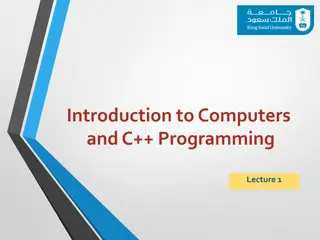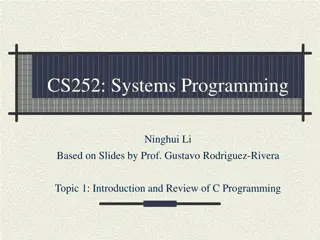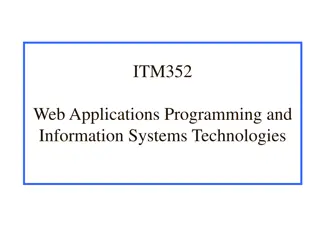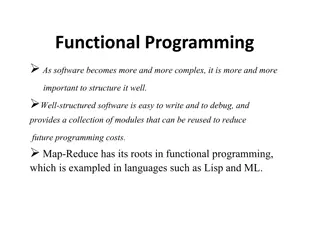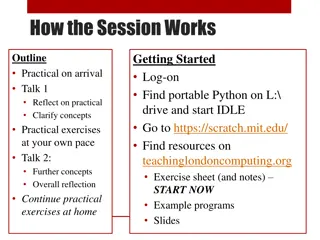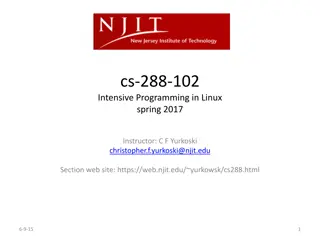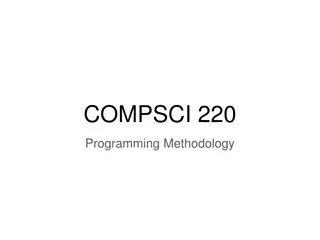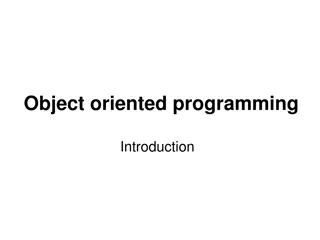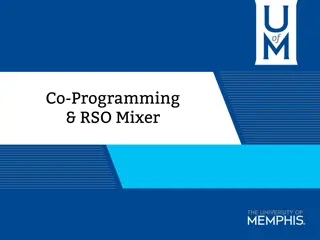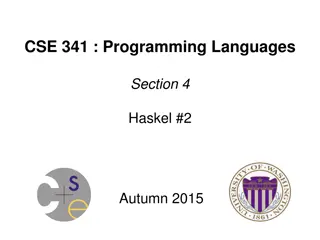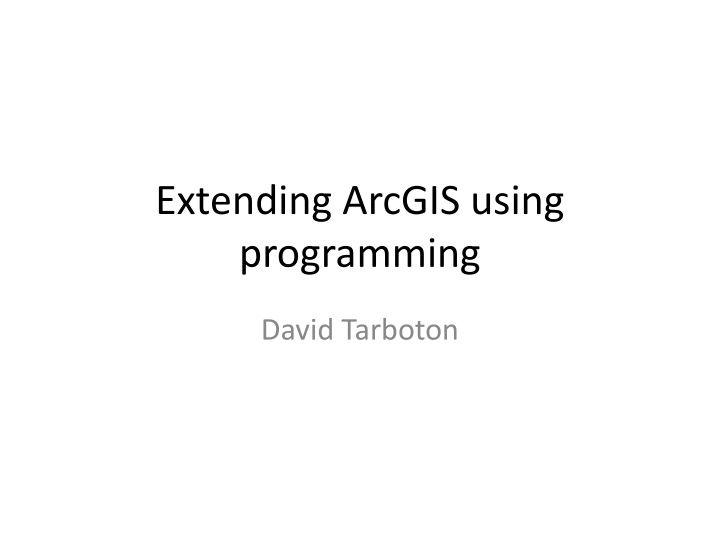
Extending ArcGIS Through Programming and Geoprocessing Tools
"Explore the power of programming in extending ArcGIS functionalities, geoprocessing tools, and Python environments. Learn about geodatabases, geovisualization, and how each geoprocessing tool has its own Python command. Discover the resources and options available for ArcGIS programming and automation of repetitive tasks." (292 characters)
Download Presentation

Please find below an Image/Link to download the presentation.
The content on the website is provided AS IS for your information and personal use only. It may not be sold, licensed, or shared on other websites without obtaining consent from the author. If you encounter any issues during the download, it is possible that the publisher has removed the file from their server.
You are allowed to download the files provided on this website for personal or commercial use, subject to the condition that they are used lawfully. All files are the property of their respective owners.
The content on the website is provided AS IS for your information and personal use only. It may not be sold, licensed, or shared on other websites without obtaining consent from the author.
E N D
Presentation Transcript
Extending ArcGIS using programming David Tarboton
Why Programming Automation of repetitive tasks (workflows) Implementation of functionality not available (programming new behavior) Steepest direction downslope Proportion flowing to neighboring grid cell 3 is 2/( 1+ 2) Proportion flowing to neighboring grid cell 4 is 1/( 1+ 2) 3 2 4 2 1 Flow direction. 1 5 8 6 7
Three Views of GIS Geodatabase view: Structured data sets that represent geographic information in terms of a generic GIS data model. Geovisualization view: A GIS is a set of intelligent maps and other views that shows features and feature relationships on the earth's surface. "Windows into the database" to support queries, analysis, and editing of the information. Geoprocessing view: Information transformation tools that derive new geographic data sets from existing data sets. adapted from www.esri.com
ArcGIS Pro Geoprocessing Help http://pro.arcgis.com/en/pro-app/help/analysis/geoprocessing/basics/what-is-geoprocessing-.htm
Getting Started in Python http://www.python.org/ http://docs.python.org/tutorial/ http://wiki.python.org/moin/BeginnersGuide/NonProgrammers http://docs.python.org/reference/index.html#reference-index From http://pro.arcgis.com/en/pro-app/arcpy/get-started/installing-python-for-arcgis-pro.htm
ArcGIS programming options Model builder Python scripting environment ArcObjects library (for system language like C++, .Net) AML Open standard data formats that anyone can use in programs (e.g. shapefiles, geoTIFF, netCDF)
Python Environments Python Window built into ArcGIS Pro http://pro.arcgis.com/en/pro-app/arcpy/get-started/python- window.htm Idle: Simple editor that is part of Python PyCharm: Powerful professional development environment, https://www.jetbrains.com/pycharm/
Demo Python code from Geoprocessing History Use of Python Window Python code from online help Sequencing code into a script Editing and running with Idle
Example Watershed delineation using Python (Steps from Exercise 4) 1. Set Inputs 2. Set workspace 3. Fill 4. Flow Direction 5. Flow Accumulation 6. Snap Outlet 7. Watershed 8. Stream Raster 9. Stream Link 10.Catchment 11.Vector Conversion DEM Outlet Threshold 1 2 3 4 5 6 7 8 9 10 11
TauDEM Stream and watershed delineation Multiple flow direction flow field Calculation of flow based derivative surfaces MPI Parallel Implementation for speed up and large problems Open source platform independent C++ command line executables for each function Deployed as an ArcGIS Toolbox with python scripts that drive command line executables http://hydrology.usu.edu/taudem/
TauDEM Parallel Approach MPI, distributed memory paradigm Row oriented slices Each process includes one buffer row on either side Each process does not change buffer row Improved runtime efficiency Capability to run larger problems
Programming C++ Command Line Executables that use MPI Use GDAL/OGR library to read and write datasets in open standard formats for exchange with other programs ArcGIS Python Script Tools Python validation code to provide file name defaults Shared as ArcGIS Toolbox Any computer Requires ArcGIS
Q based block of code to evaluate any flow algebra expression while(!que.empty()) { //Takes next node with no contributing neighbors temp = que.front(); que.pop(); i = temp.x; j = temp.y; // FLOW ALGEBRA EXPRESSION EVALUATION if(flowData->isInPartition(i,j)){ float areares=0.; // initialize the result for(k=1; k<=8; k++) { // For each neighbor in = i+d1[k]; jn = j+d2[k]; flowData->getData(in,jn, angle); p = prop(angle, (k+4)%8); if(p>0.){ if(areadinf->isNodata(in,jn))con=true; else{ areares=areares+p*areadinf->getData(in,jn,tempFloat); } } } } // Local inputs areares=areares+dx; if(con && contcheck==1) areadinf->setToNodata(i,j); else areadinf->setData(i,j,areares); // END FLOW ALGEBRA EXPRESSION EVALUATION } C++
Python Script to Call Command Line mpiexec n 8 pitremove z Logan.tif fel Loganfel.tif
PitRemove Python
Summary GIS and Water Resources analysis capabilities are readily extensible with programming to do something new to repeat something needed frequently Model builder provides visual programming and helps learn ArcGIS python commands Python cross platform, powerful and easy to use is a good programming language to start with (when your time is valuable) Compiled language programming for developers (C++) to achieve optimal efficiency (when the computers time is valuable)





